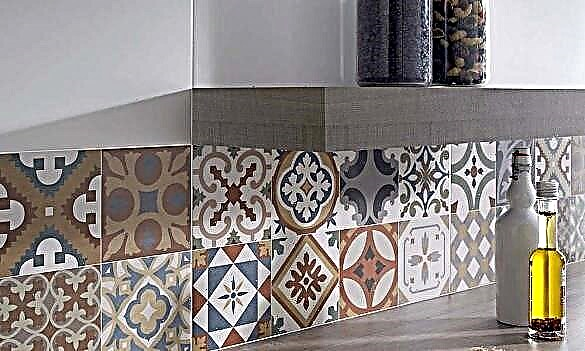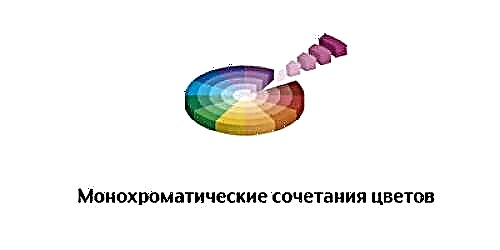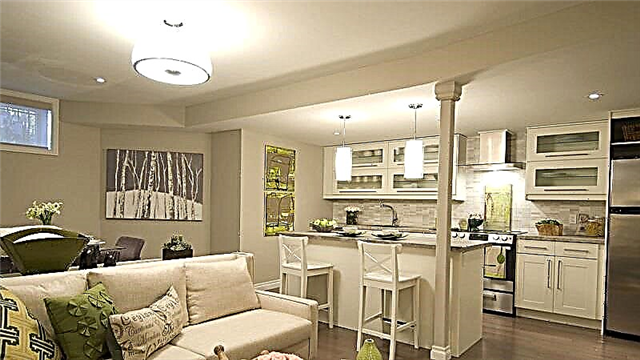Water and frost resistant.
Resistant to tile slipping.
Suitable for fixing ceramic tiles on unheated floors inside buildings.
Suitable for indoor and outdoor use.
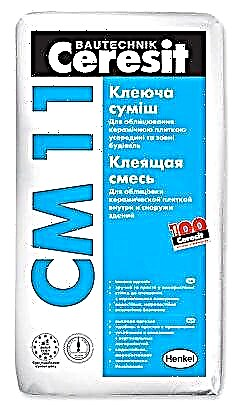
Application area:
Glue Cerezit SM-11 is intended for fixing ceramic and stone tiles with water absorption of more than 3% (size 30x30cm) on mineral non-deformable substrates, on walls and floors, inside and outside buildings, in civil and industrial construction.
SM 11 glue can be used for fixing tiles with water absorption of less than 3% (porcelain, clinker, stone, etc.) only inside buildings on unheated floors that meet the requirements of SNiP 2.03.13-88.
In the case of deformable substrates, heated screeds and other complex substrates, it is recommended to use highly elastic adhesive CM 17 or adhesive CM 11, prepared with the addition of CC 83 liquid elasticizer.
Glue Cerezit SM 11 with the addition of CC 83 elasticizer is recommended for use:
for fastening tiles with water absorption of less than 3% (porcelain, clinker, stone, etc.) on floors during outdoor work and on walls,
on heated screeds,
on socles, parapets, external stairs, entrance groups, floors of balconies and terraces, exploited roofs, etc.,
in open, as well as in sufficiently large covered tanks and pools,
on deformable substrates (wood-based, drywall, OSB and other plates),
on ceramic (including glazed) facings for exterior and interior use,
on strong paint coatings having good adhesion,
on gypsum and anhydrite substrates,
on light, cellular and “young” (“age” from 1 month) concrete.
Instructions for the performance of work Ceresit CM-11:
Work should be carried out in dry conditions, at air and base temperatures from +5 to + 30 ° C and relative air humidity of not more than 80%. The base must be dusted and cleaned of substances that reduce the adhesion of glue (efflorescence, fats, bitumen, etc.). Unstable, crumbling surface areas and delaminations must be removed.
To prepare the mortar mixture, a precisely measured amount of pure water (from +15 to + 20 ° C) or a CC 83 elasticizer diluted with water in a ratio of 2: 1 is taken. The dry mixture is gradually added to the liquid with stirring, achieving a homogeneous mass without lumps. Then maintain a technological pause for 5 minutes to ripen the mixture and mix again.
The mortar mixture must be consumed within 2 hours from the time of preparation (with CC 83 elasticizer for 1.5 hours).
Important! Do not pre-soak the tiles. Do not lay tiles end to end.
Scope of cement adhesive for tile Ceresit CM 11:
Tile adhesive Ceresit CM 11 Designed for fixing ceramic and stone tiles with water absorption of more than or equal to 3% and a size of up to 30x30 cm on non-deformable substrates, on walls and floors, inside and outside buildings, in civil and industrial construction.
Tile adhesive Ceresit CM 11 suitable for use in conditions of constant and periodic exposure to water.
Glue for tile Ceresit CM 11 is allowed for fixing tiles with water absorption of less than 3% (porcelain, clinker, stone, etc.) only inside buildings on unheated floors that meet the requirements of SNiP 2.03.13-88 (mainly in residential and administrative buildings).
In the case of warped warp screeds and other complex substrates, it is recommended to use highly elastic adhesive CM 17 or adhesive CM 11 prepared with the addition of CC 83 liquid elasticizer.
Tile adhesive Ceresit CM 11with the addition of CC83 should apply:
• for fixing tiles with water absorption of less than 3% (porcelain, clinker, stone, etc.) on the floors during exterior work and walls,
• on couplers with heating,
• on socles, parapets, external stairs, entrance groups, floors of balconies, terraces, exploited roofs,
• in open, as well as in sufficiently large covered tanks and pools,
• on deformable substrates (wood-shaving, drywall, OSB and other plates),
• on ceramic (including glazed) cladding for exterior and interior use,
• on strong paint coatings having good adhesion,
• on gypsum and anhydrite coatings having good adhesion,
• on gypsum and anhydride substrates,
• on light, cellular and "young" ("age" less than a month) concrete.
For laying marble and light translucent stone tiles, as well as for glass mosaics, it is recommended buy white glue for stone Ceresit CM 115.
For laying large-format tiles on floors, it is recommended to use adhesive for tiles Ceresit CM 12.
How to apply tile adhesive Ceresit CM 11:
Foundation preparation:
The base must comply with the requirements of SNiP 3.04.01-87 and have sufficient bearing capacity. The base must be dusted and cleaned of substances that reduce the adhesion of glue (efflorescence, fats, bitumen, etc.). Unstable spattering areas must be removed.
Walls should be pre-leveled with Ceresit CT 29 repair plaster not less than 3 days before fixing the tiles, and floors - with a leveling mixture of Ceresit of group CN. Irregularities up to 5 mm can be smoothed with CM9 glue no less than 1 day before fixing the tiles.
Typical substrates (Ceresit CM 11 adhesive)
Cement-sand and cement-lime plasters, cement-sand screeds (age more than 28 days, humidity less than 4%) are recommended to be treated with a primer Ceresit CT 17 and dry for at least 4 hours. Dense, clean, durable substrates must not be primed.
NOT Typical substrates (Ceresit CM 11 + CC83 adhesive)
Gypsum plasters (moisture content less than 0.5%), particle boards, cement-bonded particleboards, gypsum plasterboards and other boards (thickness more than 22 mm), lightweight, cellular or “young” concrete (age about 1 month, humidity less than 4%), cement -heated sand screeds should be treated with a CN 94 or CT 17 primer and completely dried (OSB boards should be treated with a CN 94 primer).
Stone and ceramic facings, water-dispersion coatings with good adhesion to the base, cast asphalt screeds must be treated with CN 94 primer and dried for at least 2 hours.
Performance of work:
To prepare the mortar mixture, a precisely measured amount of clean water (from +5 to +20 degrees) or CC 83 elasticizer diluted with water in a ratio of 2: 1 is taken. The dry mixture is gradually added to the liquid with stirring, achieving a homogeneous mass without lumps. Stirring is carried out using a mixer or drill with a nozzle for viscous mixtures at a rotation speed of 400-800 rpm. Then maintain a technological pause for 5 minutes to ripen the mortar mixture and mix again. The mortar mixture should be consumed within approximately 2 hours (with CC 83 elasticizer in 1.5 hours) from the time of preparation.
Cement tile adhesive is applied to the base with the smooth side of the toothed grater or smooth trowel and spread over the surface with the toothed side of the grater or notched trowel. The teeth should have a square shape, and their size is chosen depending on the format of the tiles (see table below). With the correct selection of the consistency of the mortar mixture and the size of the trowel teeth, the adhesive, after pressing the tiles, should cover at least 65% of the glued surface on the walls and 80% on the floors.
Attention! Do not pre-soak the tiles!
Clinker tiles can be fixed for 15 minutes ("open time") after applying glue to the base (with an elasticizer of 20 minutes). The tile is laid on the adhesive layer and pressed to the base. The position of the tile can be adjusted within 20 minutes after laying (with an elasticizer - 25 minutes).
Attention! Do not stack tiles!
The seam width is set depending on the tile format and operating conditions. The high fixing ability of the adhesive eliminates the need for gaskets between the tiles to ensure the same joint width.
For outdoor work and the installation of stone claddings, it is recommended to use the combined method of laying to increase the reliability of fixing the tiles: glue with a smooth spatula is additionally applied to the mounting surface of the tiles with an even layer of 1 mm thick. Adhesive consumption increases by 0.5 kg / m 2.
It is recommended to fill the joints with appropriate grouts for Ceresit tiles CE groups not earlier than 24 hours after laying the tiles. When using glue with the addition of an elasticizer, it is recommended to fill the joints with elastic grout CE 40 no earlier than 72 hours after laying the tiles.
Fresh glue residues can be removed with water, dried - only mechanically.
Recommendations:
Work should be carried out in dry conditions, at air and base temperatures from +5 to +20 degrees and relative humidity of less than 80%. All the quality indicators and recommendations set forth in the technical description are correct for ambient temperature and relative air humidity up to 60%. In other conditions, it is possible to change the time of consumption, adjustment and the open time of the glue, as well as the time the lining is ready to fill the seams.
In cases not mentioned in this technical description, it is recommended to use other adhesives CeresitCM or CU groups. It contains cement, and when interacting with water gives an alkaline reaction, therefore, when working with it, it is necessary to protect the eyes and skin. In case of contact with eyes, rinse with water and seek medical advice.
Notes:
In addition to this technical description, when working with glue, SNiP 3.04.01-87 should be guided.
The manufacturer is not responsible for non-compliance with the technology when working with the material, as well as for its use in conditions not provided for by this technical description.
If in doubt about the possibility of using the material, you should test it yourself or consult with the manufacturer.
This technical description, as well as recommendations not confirmed in writing, cannot serve as a basis for the unconditional liability of the manufacturer.
Storage conditions:
In dry conditions, on pallets, in the original intact packaging - no more than 12 months from the date of manufacture.
Packaging:
It is possible to buy glue for Ceresit CM 11 tile in our company. It is sold in 25 kg paper bags. The price is above retail, ask for a discount from the manager.
Specifications:
| Composition | Mix of cement with mineral aggregates and polymer modifiers |
| Bulk density of the dry mixture: | 1.5 kg / dm 3 |
| The density of the mortar mixture: | 1.5 kg / dm 3 |
| Mixing Water Amount: | 6 liters per 25 kg of dry mix |
| Consumption time: | 2 hours |
| Application temperature: | from +5 to +30 C 0 |
| Open time: | 15 minutes |
| Adjustment Time: | 20 minutes |
| Sliding Tiles: | 0.8 MPa |
| Compressive strength: | > 10 MPa |
| Frost resistance: | 100 cycles |
| Operating temperature: | from -50 to +70 ° C |
Technical Specifications for Ceresit CM 11 Tile Adhesive with CC83 elasticizer:
Scope and variety of glues
Ceresit dry mixes are manufactured by Henkel and are used for exterior and interior use, for walls and floors, and various types of substrates. The range of tile adhesives is huge, there are universal and specialized tools on sale. All Ceresit compositions vary in scope, and for the convenience of determining the destination have the following markings:
- SM - building mixtures for fixing ceramic tiles,
- CB - adhesives for fragmentary repair of lined surfaces,
- ST - mixes for installation of external (front) thermal insulation.


The purpose of the funds is different, the user can always find the right solution. Standard adhesives of the SM brand have high adhesion with brick, concrete, and are used for laying tiles, mosaics, porcelain tiles indoors and outdoors (for example, “Cerezit SM 110”). Some adhesives due to moisture resistance can be used in the bathroom, other wet rooms. Elastic adhesives will help to fix the finishing material on surfaces prone to vibration, shrinkage. There are also special adhesives of the SM series for:
- large-format floor tiles,
- mosaics and marbles (white glues),
- clinker
- front tile.
The CT line includes ready-made products and dry mixes for breeding for outdoor use. The most popular among builders are such compositions:
- CT 84 polyurethane adhesive for expanded polystyrene (used in the installation of external thermal insulation of facades),
- CT 190 stucco-adhesive mixture (CT190 is used for the installation of mineral wool boards and the base plaster layer for facade insulation),
- CT 85 stucco mixture for polystyrene boards (for indoor and outdoor use).


In the series CB 10-100, acrylic and other mounting adhesives in cylinders are produced, with which they work indoors and outdoors. All of these Ceresit adhesives can be fixed only with tiles and heat-insulating materials, and for laying other coatings it is necessary to choose specialized compounds (for example, UK 400 for PVC and linoleum). Each glue has a certificate of conformity, confirming its high quality.
Instructions for use
Before using the Ceresit tile adhesive, you must carefully prepare the base. It is necessary to fully use the high adhesive performance of the solution. It is recommended to remove the old base as much as possible, to clean and level the surface.
Vertical surfaces should first be marked and the bar set at the level of the first tiled row. This will prevent the cladding from sliding in the first 6 hours of installation.
- After mixing the solution, immediately proceed to work. Apply with a flat spatula 200-300 gr. solution on the prepared plane.
- Toothed structure with a notched trowel. The depth of the grooves is adjustable depending on the size of the tile. The smaller the tile, the less unevenness.
- Apply the cladding element for 10-15 minutes. So that the solution does not have time to set. Tap a little with a rubber hammer in order to evenly drown the tile and release excess air.
- The volume of contact of the tile with the solution should be 60–80%.
- In parallel, lay adjacent sections leaving a distance of 1–5 mm. To keep the installation even, use crosswise dividers between the tiles.
- Remove excess glue immediately with a rubber spatula and warm water.
- Leave to full adhesion for 20–36 hours.
- After drying, fill the joints with grout.
Product Feature
Glue for laying tiles must have certain qualities and characteristics. All the necessary functions have compositions from the German brand Ceresit.
The CM11 product has the following properties:
- environmentally friendly product, safe to use due to its special composition, while under the influence of high temperatures the adhesive does not emit harmful volatile elements,
- excellent indicator of frost resistance,
- the solution is resistant to slipping, maintaining its shape and strength from year to year,
- high surface adhesion
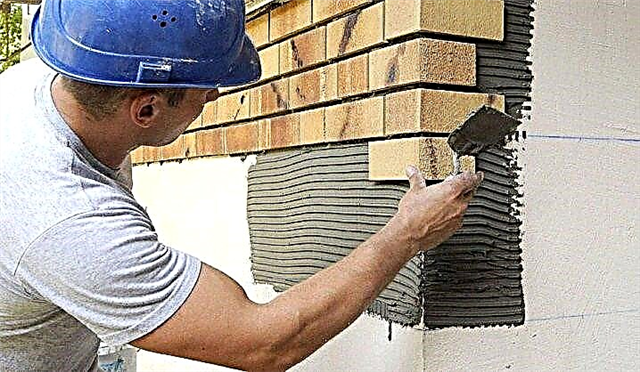
- the composition demonstrates excellent moisture repellent properties, which are mandatory for adhesives used in bathrooms and other similar locations,
- the product is suitable for working both outside and inside buildings,
- Ceresit CM 11 can be used for the installation of large tiles, the size of which reaches 50x50 centimeters.
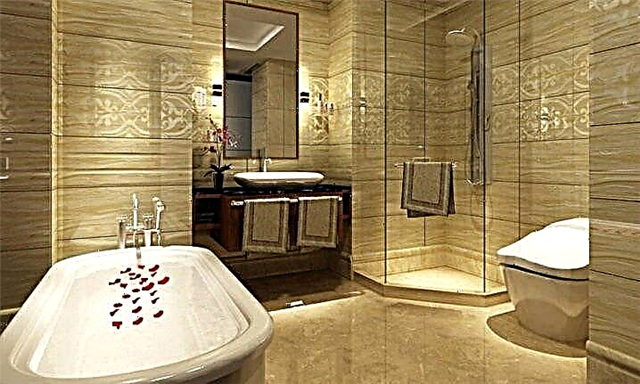
Technical parameters of the product make it popular in the conditions of repair.
- Before use, the product is diluted in water. For 25 kilograms, you need 6 liters of liquid (an approximate ratio of 1: 4).
- The finished solution can be used for 1.5-2 hours. After which it dries, and it will not be possible to apply the mixture.

- The humidity indicator is 80%.
- The minimum temperature indicator for using the mixture is 5 degrees Celsius, the maximum - 30 degrees Celsius above zero.
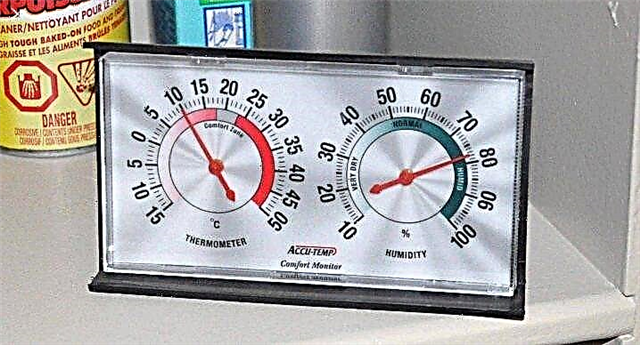
- The "open" working time of the layer is 25 minutes.
- The maximum sliding of the tile is not more than 0.5 millimeters.
- Consumption per 1 m2 - from 1.7 to 4.2 kilograms.
- Full drying takes from 24 to 36 hours.
- Shelf life of the product in the whole package totals a year.

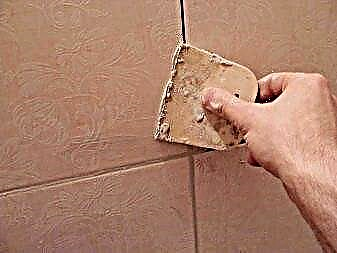
Ceresit CM 9

This is a low-cost mounting composition with an average level of adhesion to the facing material. I use it for the installation of tiles, glazed and unglazed ceramic tiles with a size of 300x300 mm. Ceresit CM 9 glues the lining on vertical and horizontal surfaces. This is a moisture-resistant composition, so it is often used for laying tiles in the bathroom.
The composition of Ceresit adhesive in this series includes polymers and mineral components, so it is sometimes used instead of cement mortar for masonry.
It is most effective to use on concrete substrates, cement-lime or cement-sand plasters, with a holding time of at least 4 weeks.
Ceresit CM 14 Extra
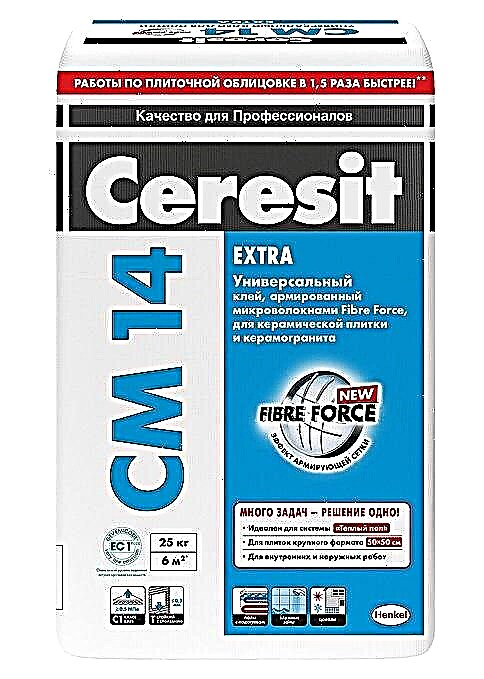
- Frost-resistant, moisture-resistant composition that will not allow the lining to slip.
- Used in the arrangement of underfloor heating and waterproofing.
- Suitable for indoor and outdoor use.
- The composition has reinforcing fibers that make it more durable and elastic.
- All types of ceramic tiles, artificial, natural stone, kerogranite, materials based on cement are laid on the mixture.
- Designed for mounting cladding on undeformed cement or concrete substrates. The material will dry for no more than a day at t from +5 to +30 ° C.
Ceresit CM 16 Flex
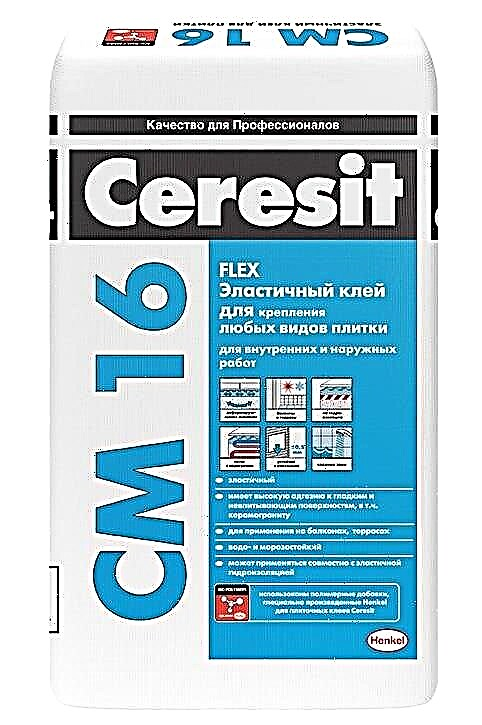
- Ceresite CM 16 is supplemented with Fiber Force reinforced fibers, has increased elasticity, and is used for the installation of any type of tile.
- The tool is resistant to deformation, it is used for facing gypsum fiber, gypsum board, fiberboard, chipboard and OSB-boards.
- The mixture is compatible with waterproofing, resistant to moisture, frost. Can be used on balconies, terraces, and indoor pools.
- CM16 is suitable for a heated screed, it allows laying the cladding over old tiles.
- Due to its increased elasticity, it prevents the formation of shear stress caused by deformation.
- You can adjust the position of the glued cladding for 25 minutes.
Ceresit CM 117
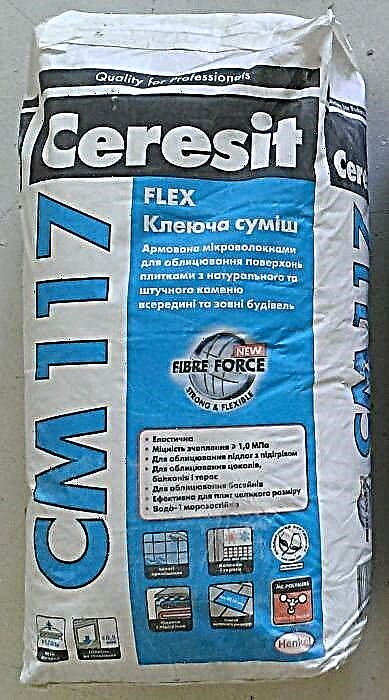
Specialized adhesive for the installation of clinker tiles and stone on building facades.
- CM 117 is resistant to dampness and low temperatures, has good elasticity and adhesion.
- It is used for indoor and outdoor use, for laying floors with heating.
- Any kind of mineral tile is glued to the product, except marble.
- Only undeformed bases are exposed on balconies, terraces, in indoor pools, on parapets, socles.
- The tile is mounted on an old tile covering, on acrylic paint, cellular and unstable concrete.
After adding elasticizers, it is possible to glue over deformed surfaces. Correct the position of the cladding in 15 minutes, while the entire prepared solution must be consumed in 2 hours.
How much dries
The drying speed of tile glue Cerezit depends on temperature and humidity. The average values of this indicator are determined from a base temperature of 20 ° C and a humidity of 60%. If the temperature is low and humidity is elevated, the solution will dry longer.
- Work stage. A solution in a high capacity begins to lose its performance in 3-4 hours. When applied to the plane, adhesion and curing begins in 15–25 minutes.
- Primary cure. The solution becomes solid and is able to hold facing elements. But the composition is still crude, can not withstand shock and vibration loads.
- Full drying and maximum strength occurs in 7–11 days.
We recommend watching the video review:
About Brand
Products of the above trademark are in demand due to a number of advantages and special qualities. Glue for tiles Ceresit CM 11 plus, designed for laying ceramic tiles, was highly appreciated by both professionals from the repair industry and ordinary customers looking for a gold price-quality ratio.
For the manufacture of products, the company uses carefully selected raw materials and innovative equipment to produce large volumes of goods without loss of quality. Products pass control at all stages of production and receive an appropriate certificate. Using Ceresit adhesives, work will proceed smoothly and without problems.
The appearance of the finish, its strength and wear resistance will depend on the choice of solution. Strong glue will hold the tiles, withstanding the microclimate conditions in the room, as well as external loads. Compositions used on the basis of rooms in high humidity and dampness are subject to increased requirements.


Preparatory work
Facing work is carried out on foundations with high load-bearing capacity, processed in accordance with sanitary standards, which implies their cleaning from pollutants that reduce the adhesive properties of the adhesive mixture (fading, grease, bitumen), removing fragile crumbling areas and dust removal.
For leveling the walls, it is advisable to use the repair plaster mix Ceresit CT-29, and for floors - the leveling compound Ceresit CH. Plastering work must be carried out 72 hours before the device tile. It is permissible to correct construction defects with a height difference of less than 0.5 cm with a mixture of SM-9 24 hours before fixing the tile.
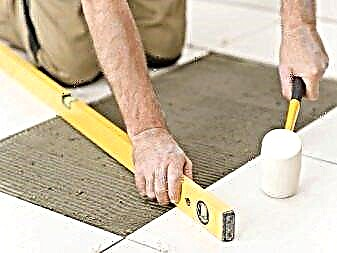
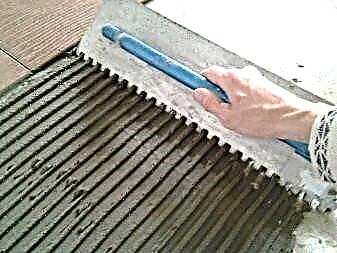
For the preparation of typical substrates, SM 11 is used. Sand-cement, lime-cement plaster surfaces and sand-cement screeds with an age of more than 28 days and a moisture content of less than 4% require CT17 soil treatment with subsequent drying for 4-5 hours. If the surface is dense, durable and clean, then you can do without a primer. In cases of preparation of atypical bases, a combination of CM11 with SS-83 is used. To plastered surfaces with a moisture content of less than 0.5%, wood-particle, particle-cement, gypsum and subfloors of light and cellular or young concrete, whose age does not exceed a month, and humidity - 4%, as well as sand-cement screeds with internal heating primer CN94 / CT17 recommended.

Claddings made of stone tiles or stone, surfaces treated with water-dispersed coatings with high adhesive properties, floating screed made of cast asphalt need to be treated with CN-94 primer. Drying time - at least 2-3 hours.
Scope of application
Ceresite cm 11 has a wide range of applications and can be used both in professional construction and installation works, as well as in self-repair or facing in everyday life.
With its help are carried out:
- Exterior and interior wall and floor cladding with porcelain stoneware, ceramics or stone.
- Fixing of finishing materials measuring 50x50 cm and weighing up to 11 kg.
- Compatible with non-deformable substrates: concrete, cement screeds, plastered brick.
- Together with plasticizers, it can be used on waterproofing coatings CC 83, CR 166, CL 51, drywall.
- The solution is compatible with the installation of the "Warm floor" system.
- Suitable for finishing the bases of indoor and outdoor pools.
- It can be applied on an old tile coating, provided that it is properly prepared.
- Used for leveling bases up to 7 mm.
- For outdoor use when installing a roof with a slope of up to 15˚.
A variety of adhesives company Ceresit
The Ceresit range of tile solutions contains formulations for both indoor and outdoor use. There are universal dry mixes and specialized formulations. All of them have different uses, to determine which is enough to look at the labeling.
- SM - a dry mix for ceramic tiles. It has good adhesive properties with respect to masonry and concrete.
- SV - for repair of individual parts of the cladding.
- ST - compositions for external use, thermal insulation works.
Compositions of the SM brand are used in the installation of tiles, mosaics, kerogranite. There are varieties for indoor and outdoor use. Moisture-resistant compounds are used in rooms with high humidity. This is an elastic compound that reliably attaches the finish even in places with vibrational stress, on surfaces prone to shrinkage. The SM series includes adhesives for large tiles, marble, facade cladding and clinker.
Popular blends of the ST series:
- ST 84 - polyurethane solution with which expanded polystyrene is glued during external thermal insulation works,
- ST 190 - a stucco-adhesive agent that adheres mineral wool, is also applied as a base plaster during the insulation of facades,
- ST 85 - polystyrene boards are plastered inside and outside the building.
The CB series is represented by acrylic-based mounting adhesives on an acrylic basis. They are used inside and outside the building.
Tile adhesive Eunice
Tile adhesive Knauf Fliesen
Tile adhesive consumption
Consumption
| Tile length, cm | Comb tooth height, mm | Consumption, kg / m² |
|---|---|---|
| Ceresit 117 | SS 83 * | |
| 4 | 1,8 | 0,15 |
| 6 | 2,5 | 0,20 |
| 8 | 3,2 | 0,25 |
| 10 | 3,6 | 0,3 |
| 12 | 4,7 | 0,38 |
* When adding an elasticizer.
Recommendations for use
- To apply cement tile adhesive, a notched trowel or notched trowel is suitable, in which the smooth side is used as the working side. The shape of the teeth should be square. When choosing the height of the tooth, they are guided by the tile format, as shown in the table above.
- If the consistency of the working solution and the height of the teeth are selected correctly, then after the tile is pressed to the base, the cladding surface of the walls should be covered with a glue mixture of at least 65%, and floors - 80% or more.
- When using Ceresit CM 11, pre-soaking tiles is not required.
- Butt laying is not allowed. The width of the seams is chosen, guided by the format of the tile and the specific operating conditions. Due to the high fixing ability of the glue, there is no need to use cross stitching, ensuring evenness and the same width of the tile gap.
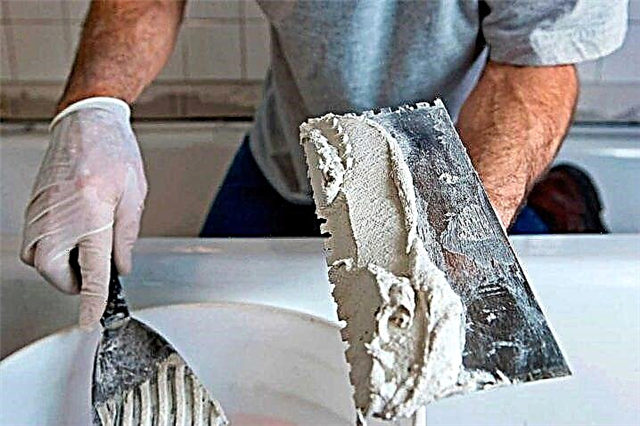
In cases of installing stone cladding or performing facade work, combined laying is recommended, which implies additional application of the adhesive mixture on the tile mounting base. When the adhesive layer is formed (thickness up to 1 mm) by means of a thin spatula, the consumption rate will increase by 500 g / m2.
Seams are filled using appropriate grout mixtures under the CE marking after a day from the moment the lining is finished.
Water is used to remove fresh residues of the mortar mixture, while dried stains and smudges of the solution can be eliminated exclusively by mechanical cleaning.
Due to the content of cement in the product, an alkaline reaction occurs when it comes into contact with a liquid.
For this reason, when working with CM 11, it is important to use gloves to protect the skin and prevent it from reaching the eyes.


Features
Adhesives for laying Ceresit tiles differ in the scope of application, as can be found on the marking on the package:
- SM - mixtures with which the tile is fixed,
- SV - materials for fragmentary repair of cladding,
- ST - mounting mixtures, with the help of which they arrange external thermal insulation on the facades.

Glue Ceresit CM 11 - a material with a cement binder as a base, the addition of mineral fillers and modifying additives that contribute to improving the technological properties of the final product. Porcelain stoneware or ceramics are fixed on it when carrying out internal or external types of interior decoration at housing and civil facilities and the manufacturing sector. It is combined with any typical non-deformable mineral substrates: cement-sand screed, concrete, plaster leveling coatings based on cement or lime. Recommended for rooms experiencing constant or short-term regular exposure to the aquatic environment.


CM 11 plus is used for facing with ceramics or natural stone with dimensions of a maximum of 400x400 and a water absorption value of 3 percent. According to "SP 29.13330.2011. Flooring ”, it is also allowed to plant tiles on it (porcelain stoneware, stone, clinker) with a water absorption capacity of less than 3% for floor cladding without electric heating. In these cases, the composition is used exclusively when carrying out interior finishing work in premises for domestic and administrative use, that is, where operation does not imply high mechanical loads.


Area of use

The described adhesive is intended for lining mineral non-deformable substrates like brick, plaster, concrete and cement. Surfaces that are supposed to be tiled can be in operation under conditions of periodic or constant exposure to water. Glue can be used in the arrangement of the underfloor heating system. This adhesive composition is also actively used when laying stone as well as ceramic tiles, the water absorption of which is 3 percent or higher.
Key Specifications

“Cerezit SM 11”, the technical characteristics of which should be read before purchasing the composition, can be used after kneading for 180 minutes. In order to know how much is needed for the work, it should be taken into account that about 1.7 - 4.2 kilograms will be needed per square meter. The final figure will depend on the thickness of the laid layer, as well as the material at the base of the decorative finish of the subfloor. It is important not only to choose the right adhesive composition, but also to observe the technology of its mixing. Thus, 0.24 liters of water will be needed per 1 kilogram of the mixture. And for 25 kilograms of dry composition, which is equal to one bag, you will need 5 liters of water. The master must observe the thickness of the recommended layer, which is 6 millimeters, when laying. Open time is 15 minutes, which is why it is important to lay the tiles until the mixture sets. The master has the ability to adjust the final position of the product after laying for 20 minutes.
Instruction for use

If you will use Ceresit SM 11 for laying tiles, the technical characteristics of which are presented in the article, it is important to take into account some of the nuances of the work. You can start grouting the joints one day after the completion of the manipulations on the lining. Do not start work if you cannot achieve the optimal ambient temperature, as well as the foundation. This range can vary from +5 to +30 degrees. As for the operating temperature, it varies from -50 to +70 degrees. If you need to take into account the quality of frost resistance, you should remember that Cerezit SM 11, the technical characteristics of which must be known before starting work, will be able to transfer 100 cycles of freezing and thawing.
Preparation of the base and method of use

Before proceeding with the application of the adhesive, it is necessary to clean the surface of dust, dirt, and oil stains. It is important to free the work surface from exfoliating areas, which may be represented by the old finish. If irregularities have been noticed, then they can be eliminated by applying plaster.Before you start lining, it is necessary to treat the base with a primer. Tile glue “Ceresit”, the technical characteristics of which will become known to you after reading the article, must be prepared according to the rules on the packaging. The dry mixture is poured into a container in which pure water is located. After you can start mixing until you can achieve a homogeneous mass. In this state, the mixture is left for 5 minutes, and then mixed again, then we can assume that the solution is completely ready for use.
Professional Recommendations
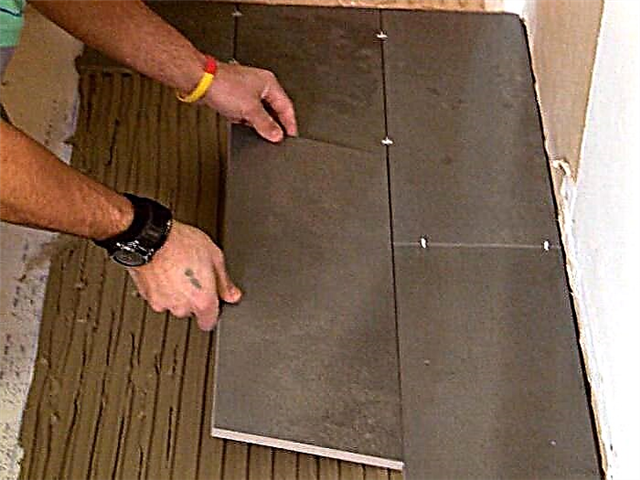
After the solution is ready, with the help of a notched trowel, it should be applied to the surface. Tiles are laid on the formed adhesive layer, after which the product is carefully pressed to the base of the wall or floor. It is recommended to store glue in a closed container for six months from the date of manufacture.
Main advantages

Ceresit CM 11 Plus, adhesive for attaching ceramic tiles, has a number of undeniable advantages. Among them, we can distinguish the absence of the effect of creep of the composition when used on a vertical surface. Among other things, the composition can be used at sub-zero temperatures. The mixture is so popular among consumers also because of the lack of restrictions on use in high humidity conditions. You can count on economical consumption when applying. Specialists and private masters emphasize that the glue is convenient in the process of preparation and application. “Ceresit CM 11” - adhesive for tiles, the properties of which are presented in the article, is completely harmless to human health, since it does not contain harmful substances and toxic impurities.
Additional properties

It is important to consider that the application of glue can be done on the plastered surface and cement screed, after the formation of each of which 28 days have passed. As for concrete substrates, it is possible to start work on such surfaces 90 days after the completion of work. In order not to encounter problems during operation, do not start manipulating the decoration of deformable substrates. This adhesive composition is also incompatible with products whose water absorption is less than 1%. If there is a need to lay tiles in rooms with high humidity, with regard to showers and bathrooms, the Ceresit CM 11 adhesive mixture, the technical characteristics of which are presented in the article, can be used only if the humidity is periodically increased, as well as intensive ventilation. It is important to properly prepare the bases that have large crevices and potholes. The craftsman must grind and level the surface using plaster or mineral filler.
Use of Cerezit SM 11 glue in tandem with an elasticizer
“Cerezit SM 11 plus”, the technical characteristics of which will become known to you after you read the article, can be used for arranging heated screeds on parapets, socles, entrance groups, outdoor stairs, terraces, balconies, as well as exploited roofs, however in this case, the adhesive must be used together with a CC 83 brand elasticizer. The mentioned additive is used when there is a need to apply the described adhesive on deformable substrates, namely gypsum boards, chipboards ah, and OSB. The combination of glue and elasticizer allows the composition to be used in indoor and outdoor pools and tanks. Experts recommend the use of such technology on ceramic claddings when carrying out both internal and external works. This can even include glazed products. This solution is also suitable for paint coatings, which are characterized by a high degree of strength and excellent adhesion. If you are faced with the task of using the adhesive composition on anhydride or gypsum substrates, as well as lightweight cellular concrete, whose age starts from 1 month, then the recommended addition to the composition in the form of an elasticizer is an indispensable solution.
The nuances of the work
If you will use “Ceresit SM 11”, technical characteristics, the price of which is indicated in the article, it is important to take into account the moment that the consumption of the composition will depend on the depth of the teeth of the tool used for applying the mixture. Before mixing it is necessary to warm the water to 35 degrees. When mixing, it is recommended to use a special construction mixer, which will achieve a homogeneous consistency. You can use a grater or putty knife during work, depending on what is more convenient for you.
Conclusion
It is important to exclude the possibility of overpayment for the adhesive. That is why before buying it is recommended to calculate the approximate amount that will be needed for the finishing work. For a 25-pound bag you will have to pay 250 rubles. In order to ensure even more economical consumption, the surface should be carefully prepared. It should ideally be as even as possible. Carrying out such manipulations will cost less in comparison with the purchase of glue.

